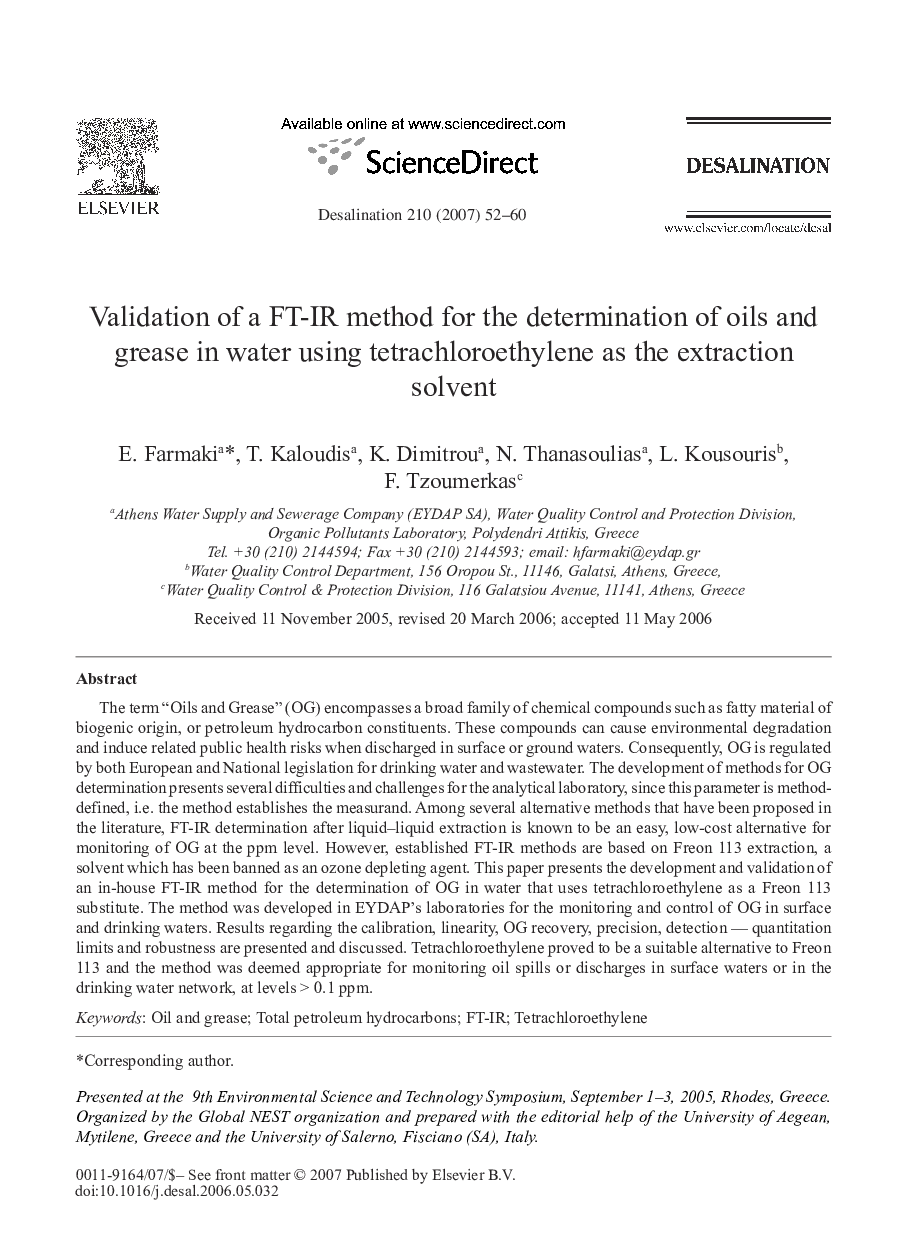| کد مقاله | کد نشریه | سال انتشار | مقاله انگلیسی | نسخه تمام متن |
|---|---|---|---|---|
| 628052 | 1455480 | 2007 | 9 صفحه PDF | دانلود رایگان |

The term “Oils and Grease” (OG) encompasses a broad family of chemical compounds such as fatty material of biogenic origin, or petroleum hydrocarbon constituents. These compounds can cause environmental degradation and induce related public health risks when discharged in surface or ground waters. Consequently, OG is regulated by both European and National legislation for drinking water and wastewater. The development of methods for OG determination presents several difficulties and challenges for the analytical laboratory, since this parameter is methoddefined, i.e. the method establishes the measurand. Among several alternative methods that have been proposed in the literature, FT-IR determination after liquid–liquid extraction is known to be an easy, low-cost alternative for monitoring of OG at the ppm level. However, established FT-IR methods are based on Freon 113 extraction, a solvent which has been banned as an ozone depleting agent. This paper presents the development and validation of an in-house FT-IR method for the determination of OG in water that uses tetrachloroethylene as a Freon 113 substitute. The method was developed in EYDAP’s laboratories for the monitoring and control of OG in surface and drinking waters. Results regarding the calibration, linearity, OG recovery, precision, detection — quantitation limits and robustness are presented and discussed. Tetrachloroethylene proved to be a suitable alternative to Freon 113 and the method was deemed appropriate for monitoring oil spills or discharges in surface waters or in the drinking water network, at levels > 0.1 ppm.
Journal: Desalination - Volume 210, Issues 1–3, 10 June 2007, Pages 52-60